- 1. Create a detailed soup business plan
- 2. Brainstorm some soup restaurant names
- 3. Obtain the licenses & permits you need
- 4. Scout soup shop locations in your area
- 5. Create a winning soup shop menu
- 6. Purchase the equipment you need
- 7. Expand payment variety with a soup shop POS system
- 8. Hire & train your soup shop staff
- 9. Think of soup marketing ideas to promote your business
- 10. Test drive your soup business before the grand opening
- Related resources
- Frequently asked questions
To start a soup business, you need to create a thorough business plan, obtain the licenses and permits you need, craft a menu, find a suitable location, acquire the tools and technology you need, and create a bulletproof marketing plan.
In today’s article, we are going to take a thorough look at how to start a soup business. We will cover everything from concept to completion. Let’s dig in!
How to Start a Soup Business in 10 Easy Steps
- How to create a soup business plan
- How to choose your soup restaurant’s name
- How to obtain the licenses & permits you need
- How to find the perfect soup shop location
- How to craft a soup shop menu
- How to purchase soup shop equipment
- How to expand payment variety with a soup shop POS system
- How to hire & train your staff
- How to create a marketing plan for your soup shop
- How to organize a soup shop soft opening
If you’re ready to commit, this step-by-step guide will take you through all the necessary steps on how to start a soup business:
1. Create a detailed soup business plan
A soup business plan is a document that outlines how you will achieve your business objectives and includes information about your product, marketing strategies, and finances.
Here is a list of all the key sections in a soup business plan, along with what should go into each section:
1. Executive Summary – This is where you briefly state what your business is and why it will be successful. It includes your mission statement, unique selling propositions, products or services, and basic information about your company’s location, leadership team, and employees. You should also include your financial information and plans for growth if you plan to ask for financing.
Example of soup shop mission statement with unique selling propositions (USPs):
[Restaurant name] aims to become the go-to destination for soup lovers, offering hearty meals, a cozy ambiance, and unparalleled variety, for an unforgettable culinary journey. We take pride in using only the freshest local ingredients, ensuring every soup is packed with flavor. Can’t find your favorite soup on the menu? We embrace customization. Add toppings and add-ons to make your own personalized bowl of soup.
To ensure everyone who visits your website knows who you are and what you provide, add this mission statement to your homepage. With GloriaFood’s website builder, it’s easy to customize your About section to include this mission statement.
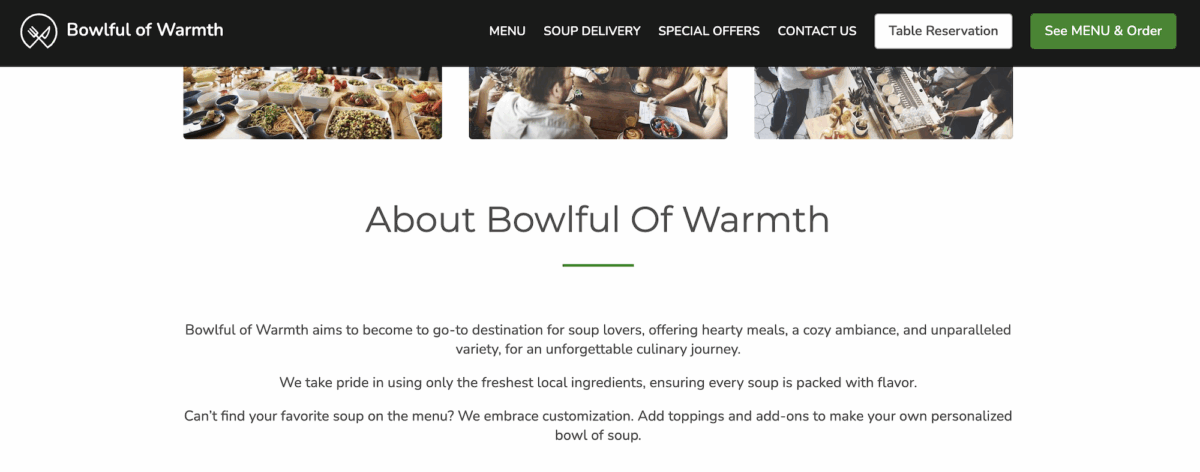
2. Company description – In this section, you need to give a detailed description of your company. Go into detail about the problems your business solves, describing your target market. Explain the things that will make you better than your competitors and how you plan to stay relevant in this industry.
Example of a target audience for a soup shop:
[Restaurant name] is created for people who appreciate comfort meals that are both nutritious and satisfying. We cater to busy office workers who want a bowl of pick-me-up during their lunch break, as well as families looking for a homely meal away from home.
3. Market analysis – Here is where you would look at things like customers, pricing, competition, and market size. You should include the actual size of the market you want to serve and prices your customers are willing to pay.
4. Organization and management – This is where you would state the organizational structure of your soup business. Use an organizational chart to display who is in charge of what. Describe how each person’s experience will contribute to the success of your business. You might consider adding resumes and CVs of key members of your team.
5. Sample Menu – Provide a copy of your intended menu. This does not have to be the final version. Make sure to include nutritional facts and the health benefits for your customers. Your pricing strategy should also be explained here.
6. Marketing and Sales – Describe in detail how you are going to gain brand visibility. State whether you will have a soup brand name. List the promotions you might use to gain and retain customers. List the marketing channels you will leverage to inform the public about your business.
7. Financial Plan – The goal of this section is to convince readers that your business is stable and will be a success. Detail the startup cost involved (kitchen, licenses, equipment, initial inventory). Include revenue projections (monthly and yearly sales forecasts). If you are going to be looking for funding, the requirements should be listed here.
8. Appendix – Use this section to provide supporting documents or other materials that were specially requested. These could include resumes, menu pictures, letters of reference, licenses, permits, legal documents, and other contracts.
2. Brainstorm some soup restaurant names
Choosing a good soup business name is very important. It significantly impacts how your customers view your business and distinguishes you from your competitors.
The importance of this step is often overlooked when planning how to start a soup business, but it can be expensive to correct over time.
Here are some good examples of soup restaurant names:
- Liquid Comfort
- Bowlful of Warmth
- Sensational Soups
- The Good Soup
- Ladle & Love
- The Soup Lab
- Soup-er!
3. Obtain the licenses & permits you need
Licenses & permits can provide your soup business with legal benefits, build goodwill, ensure food safety, and create consumer awareness.
Here are some of the most common licenses & permits needed to open a food establishment in the US:
- Business license – This is an authorization granted by government agencies that allows individuals or companies to conduct business within the government’s geographical limits.
- Food handler’s permit – This is a legal document granted by the local health department to prove that an employee working in the food industry is properly trained in food handling techniques. This permit usually comes with additional training provided by the issuing body.
- Food service license – This license is only issued after the Department of Health conducts a visit to your business. Before they visit, you will have to meet various requirements, including fire safety, equipment first aid, etc.
- Sales tax license – This allows you to legally collect taxes from your customers. In most cases, it comes with a unique identifier that lets the issuing body know the specific business that is submitting the tax to them.
The list of licenses & permits needed when planning how to start a soup business is going to be different depending on your geographical location, so please check with your local regulatory authorities before using our list.
If you are in the US, you can check the FDA’s guide on how to start a food business, which provides a variety of resources depending on the type of business you want to open.
If you are in the UK, consult gov.uk’s guide to food business registration for more information.
How to start a soup business from home
If you’re planning on opening a homemade soup delivery business that will operate from your home, you need to comply with food safety regulations and potentially undergo a home kitchen inspection to ensure you can safely prepare food at home. You need to consult with your local authorities for all the licenses and permits you may need.
4. Scout soup shop locations in your area
Location might be the most important factor to consider when you make your own soup restaurant. A good location can drastically reduce operating costs by drawing in more customers and cutting down on marketing expenses.
You must do your research to find out who is craving what you serve, then find a spot with:
- High enough foot traffic to attract customers.
- Easy accessibility and ample parking spaces.
- The possibility to add signage that will make the restaurant more visible from nearby streets.
- Not too much competition that your restaurant will be overshadowed.
5. Create a winning soup shop menu
Soup is a comfort food often associated with warmth and nostalgia. When crafting your soup shop menu, you should ensure the menu items remind your customers of home or a memorable time in their lives.
Include basic flavors like:
- Chicken noodle soup
- Vegetable cream soup
- Minestrone
- Potato soup.
Then, take thingss up a notch with some artisanal soups like turkey noodle, broccoli cheese, or French onion soup.
Your soup price list should reflect what you are serving. Soups do not provide much sustenance and are traditionally inexpensive, so you should keep your prices affordable.
One way you can stand out from your competitors is with a QR code menu. Your restaurant can save a lot of time and money by allowing customers to order and pay using a digital food menu.

Save time and money: Use a QR code menu for your soup business
Give your customers the convenience of ordering and paying from their mobile device.
Generate my QR code now6. Purchase the equipment you need
How to start a soup business without the necessary equipment? The equipment required to launch your soup business will differ depending on its size, needs, concept, and menu items.
Go through the list below and evaluate which ones might be best for your establishment:
- Pots
- Blenders
- Food processors
- Stainless steel worktables
- Refrigerators
- Soup warmers
- Microwaves
- Induction or gas ranges
7. Expand payment variety with a soup shop POS system
One of the best ways you can streamline operations and generate more revenue is by getting a soup shop POS.
A dedicated POS can help accept a wider variety of payment methods, from credit and debit cards to smartphones and smartwatches. That way, you can serve more customers every day.
Here’s what you’ll benefit from if you choose the GloriaFood soup POS:
- Intuitive POS hand gestures that help you speed up your workflow.
-
- Swipe to the left or to the right to delete an item from the check
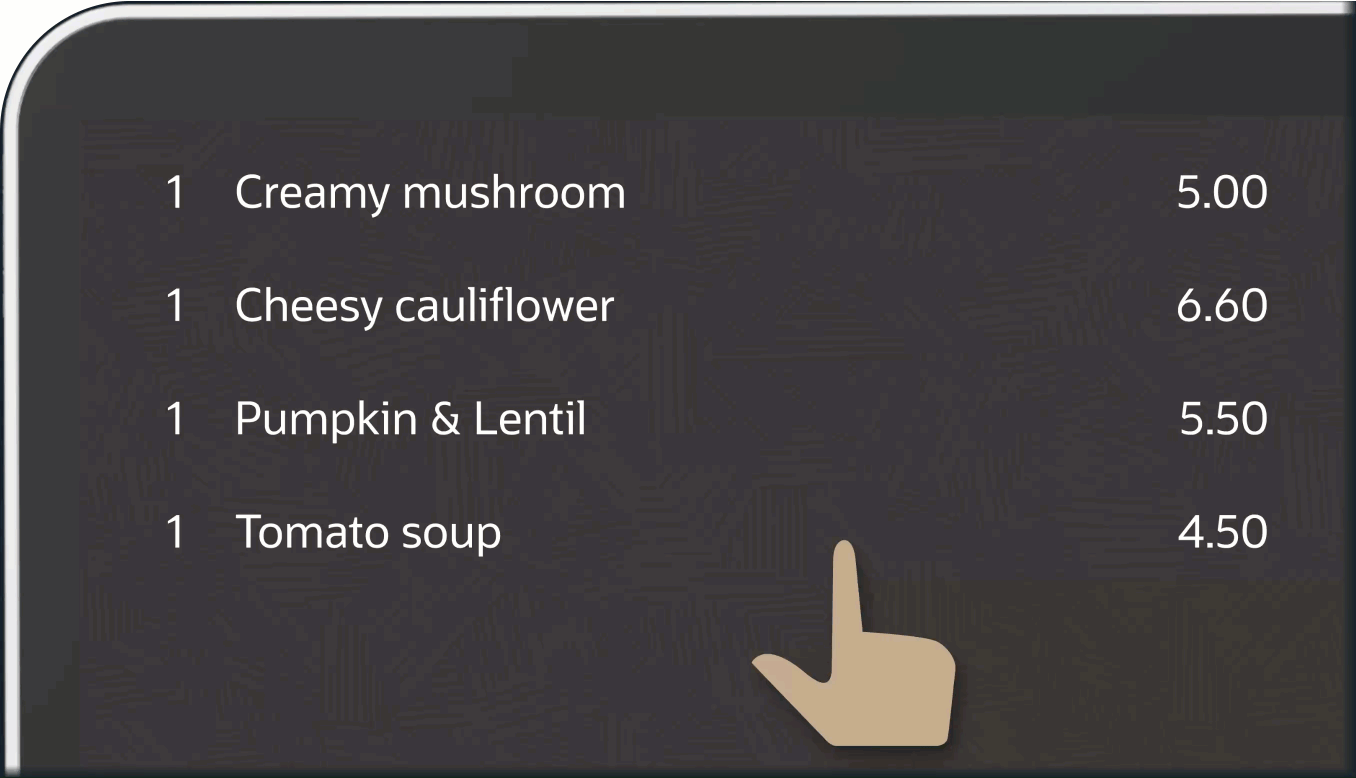
-
- Click the quantity of a menu item in the check detail to increase the number by 1
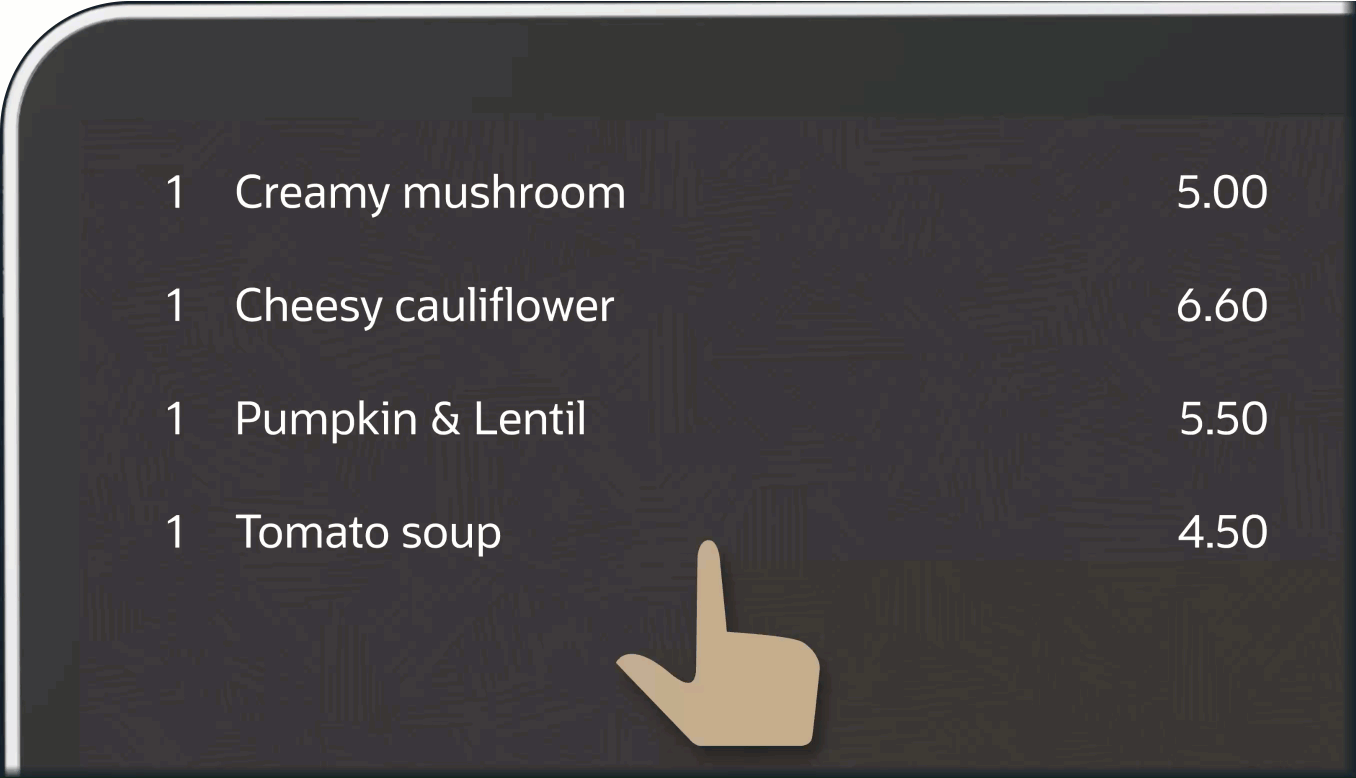
-
- Long hold (long click) to reset the quantity to the original value.
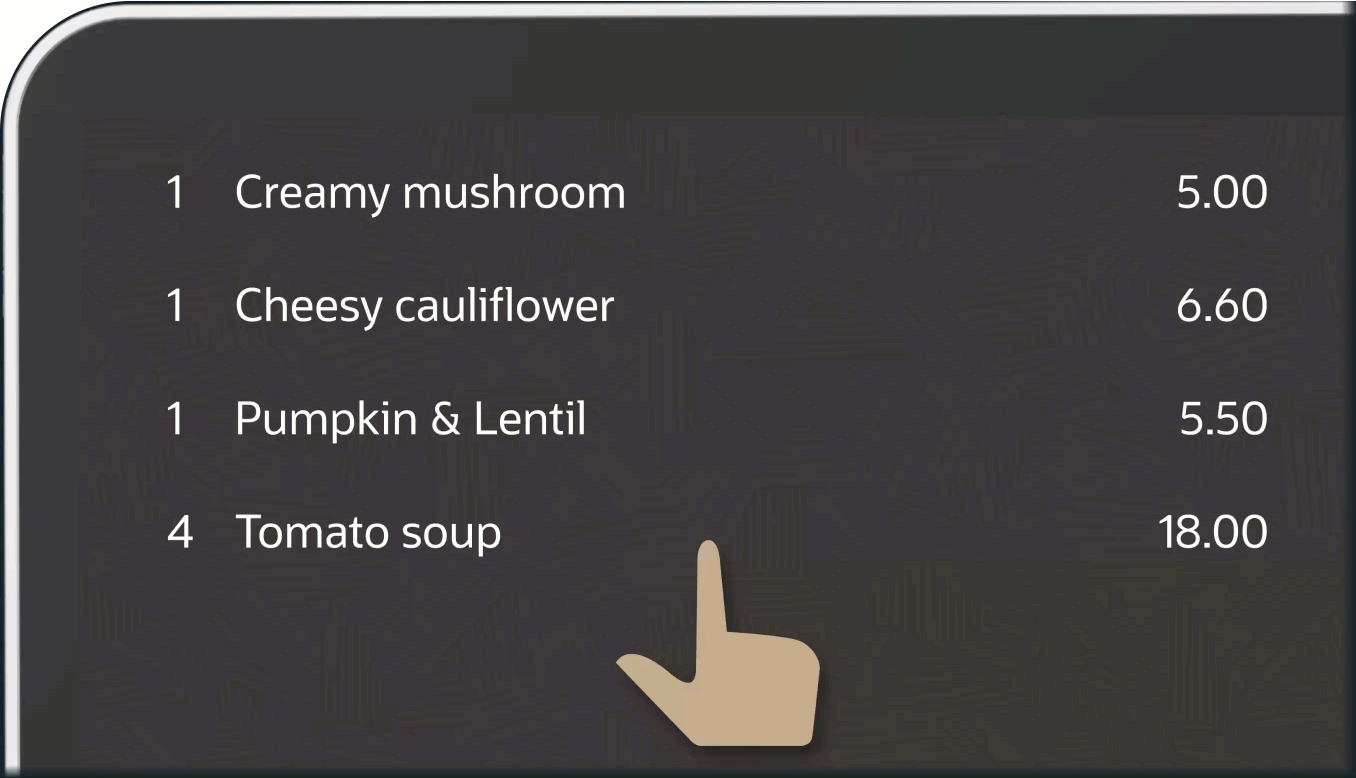
- Color-coded menu categories so you can find the menu items you need faster and serve more customers every day.
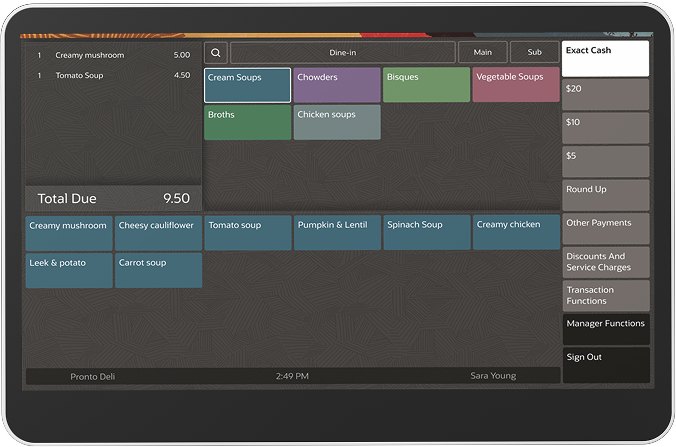
- Fast payment processing – Accept payments from credit cards, mobile phones & smartwatches using our robust payment terminals. Daily fund deposits go into your bank account with fixed and transparent payment processing fees.

- Online ordering – Built-in online ordering from your social media, website, or app. No monthly subscription fees, easy & fast setup and even faster checkout. Easy centralization of all in-person & online food orders.
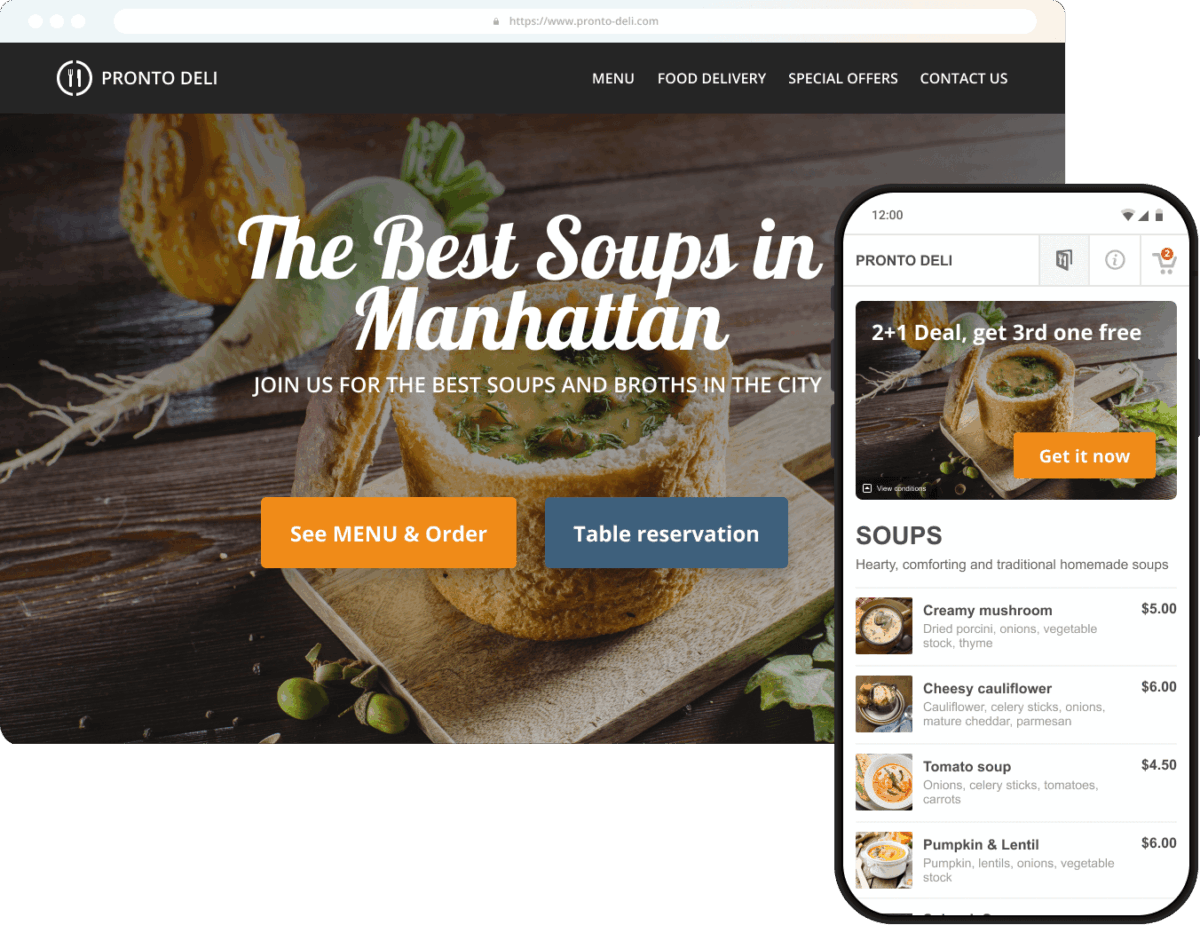
- Soup business analytics – Our report modules for in-store and online analytics allow you to compare your weekly or monthly sales & cashflow. Discover what your most effective promotions & bestselling menu items are. It even allows you to find out more on your customer retention rate.
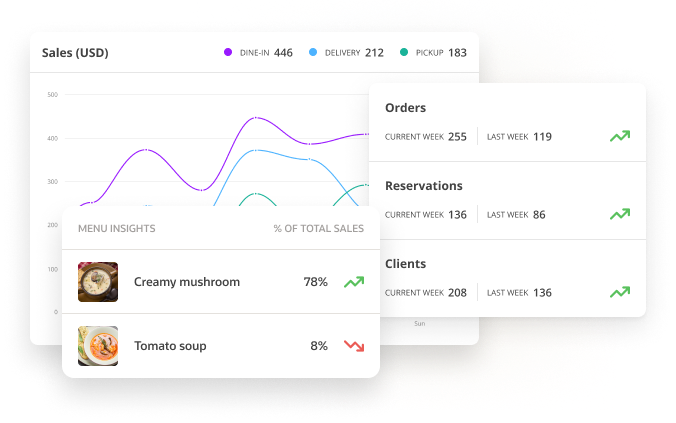
Start Your Soup Shop the Smart Way
Keep orders organized and customers happy with our POS system
Try GloriaFood POS8. Hire & train your soup shop staff
When learning how to start a soup business, staff should be one of your main priorities. Hiring and training staff for a soup restaurant requires a structured approach focused on efficiency, food safety, and customer service.
Your primary objective is to hire the right team with basic kitchen or food service experience, friendly team-oriented attitude, and the ability to multitask under pressure.
When training your staff, ensure you have a training checklist for each role and easy-to-follow reference guides or binders.
During the training process and after training, you can benefit from our POS’s staff management features:
- Oversee & manage restaurant employees: Add, remove, or update employees as often as you want.
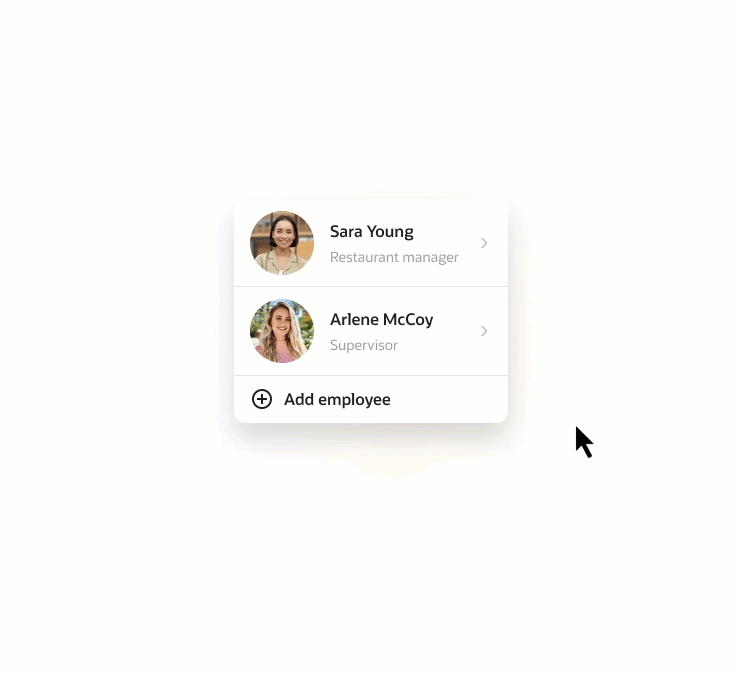
- Training mode for new employees: Help new employees gain the confidence they need by allowing them to make mistakes without jeopardizing your reports. Once an employee completes their training, simply disable training mode to give them access to the live system.
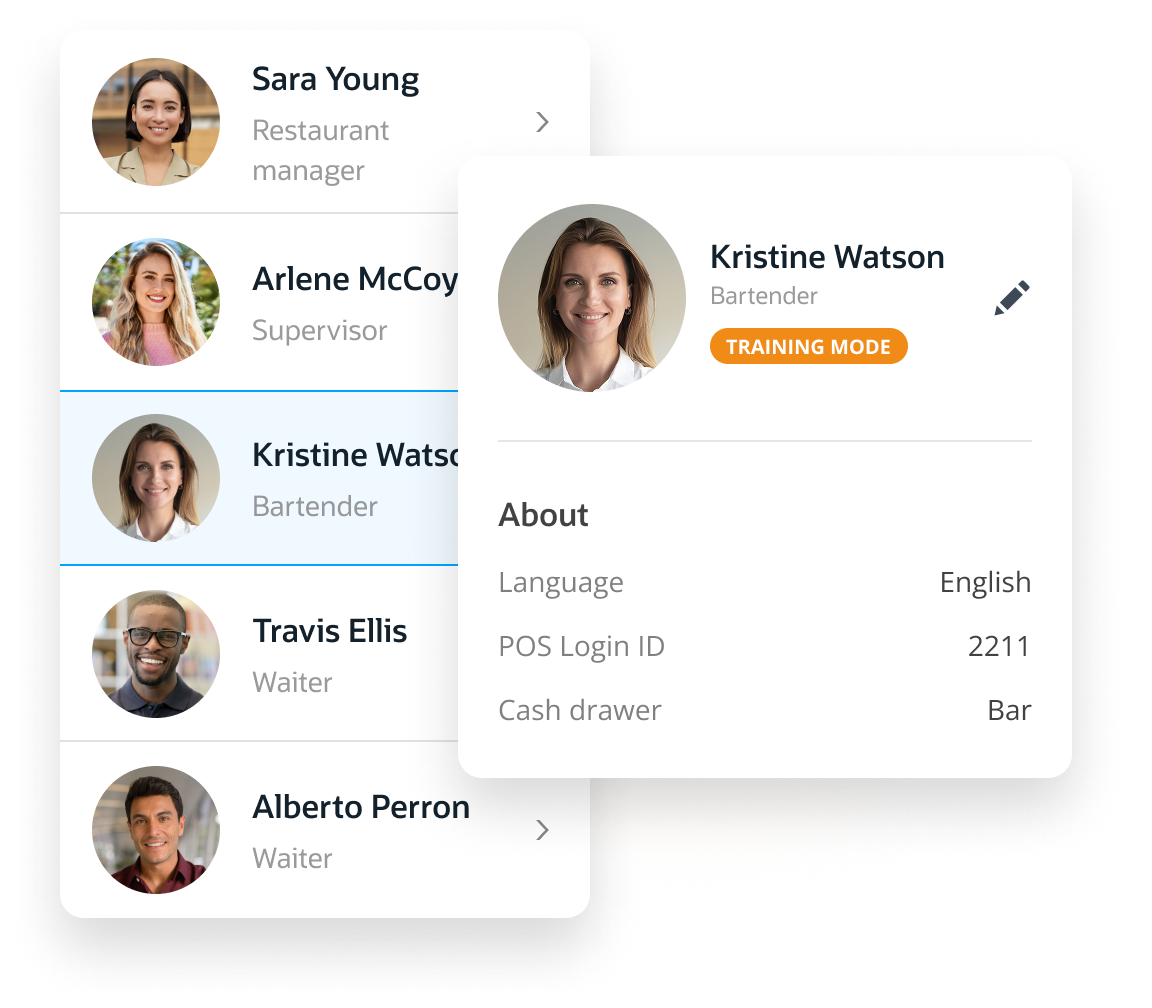
- Easy tracking of employee transactions: Thanks to the unique POS ID assigned to each employee and featured on all transactions, you can get a clear overview of your employees’ transaction logs.
- Allow different roles and responsibilities: Grant manager-only access to financial operations, like manually opening the cash drawer, or enable all employees to void menu items.
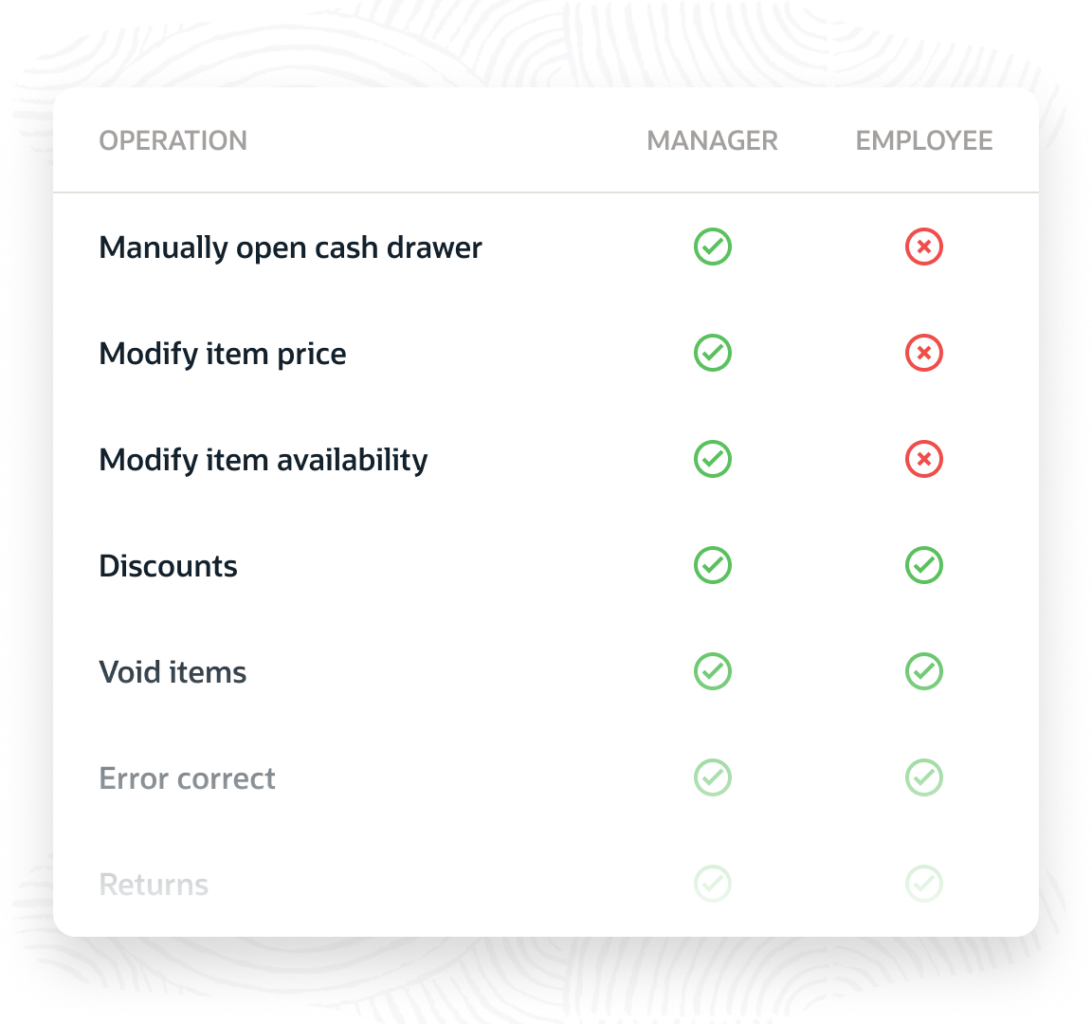
- Speed up counter service: All your employees need to do is tap the RFID cards against the POS to gain instant access.
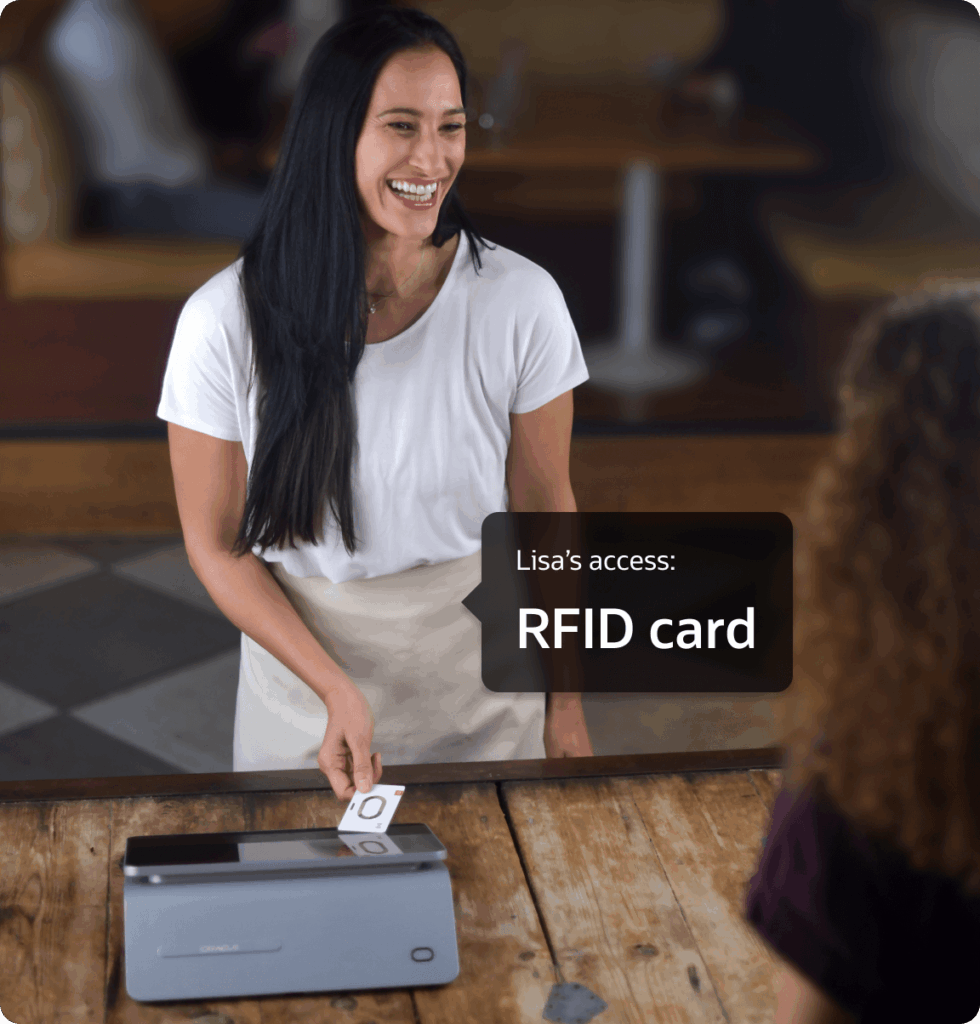
9. Think of soup marketing ideas to promote your business
Simply opening your doors and expecting people to walk in will not make you successful. You need to find ways to spread the word about your business using soup marketing strategies like:
- Creating irresistible promotions: Offer discounts on gloomy weather days (“Show us your umbrella and get 10% off”). You can create this promotion and any other you can think of using GloriaFood’s promotions module.

- Sending automated marketing emails: Automatically send emails to customers who abandoned their carts, encourage customers to place a second order, and re-engage customers who have not ordered from your soup business for a long time. You can set up these three automated email campaigns with GloriaFood:

- Promoting your business on social media: Utilize platforms like Instagram & TikTok to post high-quality soup photos and behind-the-scenes kitchen clips. Take advantage of user-generated content by encouraging customers to tag your location for a chance to win a prize. Add GloriaFood’s smart ordering link to any social media platform to unlock a new sales channel for free:

- Getting a sales optimized website: Our restaurant website builder helps you create a visually stunning website with just a few clicks. The website is also optimized to help you rank higher in search results, which can lead to increased sales.

- Gaining visibility in your neighbourhood: Use GloriaFood’s restaurant flyer maker to create eye-catching flyers. Put a flyer in each takeaway bag and offer a discount if the customer redeems the coupon code. You can find more information on attracting customers with flyers in the video below:

10. Test drive your soup business before the grand opening
Before officially opening your soup business, you should consider hosting a soft opening. Soft openings act as a sort of dress rehearsal, allowing you to test your menu, service, and overall operations before your grand opening.
You should invite a small group of people who can provide constructive feedback, such as family, friends, local influencers, or media contacts. Offer a smaller menu with your signature dishes to focus on quality and improve efficiency.
Gather as much feedback as possible on how to start a soup business that will appeal to your target audience, then make the necessary adjustments before your grand opening.
Soup Market Size & Future Projections
As people are becoming more health aware, the demand for organic and healthy varieties of soups has also grown, further powering market growth.
The soup market size was valued at USD 19.05 billion in 2023 and is expected to grow at a rate of 4.7% from 2024 to 2030.
Soup business owners see average gross margins of 43%. This number is slightly higher than the restaurant industry and can be attributed to lower ingredient costs.
Soup Business Ideas You Can Experiment With
When brainstorming how to start a soup business, consider these concepts:
- Gourmet mobile soup business – With this concept, you can create a soup food truck menu with fresh, high-quality soups and artisan bread on the go. This concept might cut into your profit margins because of the cost of premium ingredients. The ideal location for this will be office parks, events, and campuses.
- Cultural soup pop-up series – This idea focuses on limited-time pop-ups featuring soups from different countries each week—like Thai Tom Yum, Nigerian Egusi, French Onion, or Romanian ciorba de Burta (Tripe soup).
- Soup cafe: A cozy spot that offers dine in and takeaway serving warm, hearty soups from an all-season menu.
- Soup subscription service – This soup business idea provides weekly handmade soups to convenience seekers or busy families on a subscription-based model. Provide a rotating menu that aligns with the dietary restrictions of your customers.
Final Thoughts
Now that we have answered the question “How to start a soup business”, will you share your bowls of comfort with the public? Which soup business will you choose?
Regardless of your choice, remember we can support you with tools and technologies like a POS system and online ordering.
Interested in reading more in-depth guides on how to lead your food business to success? Check these out!
Frequently asked questions
Yes, selling soup is profitable because it doesn’t cost a lot to produce, which can lead to high profit margins. By using affordable seasonal ingredients, streamlining operations, and promoting your business using GloriaFood’s technology stack, you can increase the profitability of your soup shop.
Yes, soup can have a high profit margin due to the low food cost. For example, a $5 soup can take up to $2.50 to make, which leaves you a 50% profit margin.
Owning a soup shop can be very profitable if you focus on local ingredients and effective marketing. If you’re wondering how to sell soup better, here are a few tips on making money at your soup shop:
- Look for local suppliers: This ensures quality ingredients that are always fresh and in season, while being affordable. Keeping your menu updated season to season is a breeze with GloriaFood’s online menu builder. You can make unlimited menu changes that will be live in seconds.
- Offer toppings & add-ons: An easy way to increase the average check value is to enable clients to customize their soups with additional toppings or sides. These low-cost, high-value additions to the menu will increase profitability. Our online menu builder enables you to customize each dish with choices and add-ons.
- Market your business online & offline: From irresistible promotions to email marketing and flyers distributed around the neighborhood, the GloriaFood ecosystem can help you promote your soup business to a wide audience.
The best way to package soup depends on your menu, target audience, and branding. You have several options of how to package soup for sale, from plastic containers to paper soup cups or glass jars.
If you want to open an environmentally friendly soup shop, look for recyclable or compostable materials or create a “bring your own container” program. If your main concern is the cost, paper cups and lids are the more affordable alternative.
When choosing the best soup packages for your needs, also consider food quality and safety. You want the food to arrive fresh and properly sealed to avoid any accidents.
- 1. Create a detailed soup business plan
- 2. Brainstorm some soup restaurant names
- 3. Obtain the licenses & permits you need
- 4. Scout soup shop locations in your area
- 5. Create a winning soup shop menu
- 6. Purchase the equipment you need
- 7. Expand payment variety with a soup shop POS system
- 8. Hire & train your soup shop staff
- 9. Think of soup marketing ideas to promote your business
- 10. Test drive your soup business before the grand opening
- Related resources
- Frequently asked questions
Get your restaurant POS system
More than [[restaurants_number]] customers have advanced their restaurant businesses with GloriaFood










